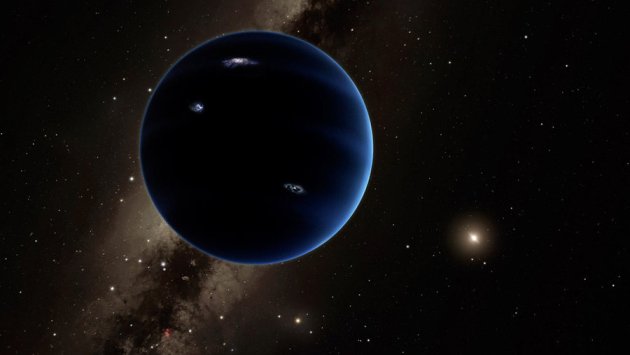Caltech Astronomer Discovers New Planet 9
Caltech astronomer Michael Brown together with Konstantin Batygin, Caltech planetary scientist, announced recently that they may have discovered a new planet that may serve as a replacement to Pluto. It can be remembered that Brown was responsible for the demotion of Pluto into a dwarf planet in 2006.
Brown said while the idea of another planet in the solar system was already the subject of discussions in the past, this is the first time in one-and-a-half centuries where convincing evidence emerged on the existence of another planet.
The Astronomical Journal referred to the discovery of Brown and Batygin as “Planet 9.” It started in 2003 when a dwarf planet, Sedna, was discovered. Sedna, which is smaller compared to Pluto, is a Kuiper Belt Object or KBO and is one of the rocky, icy objects surrounding the solar system. Brown was a member of the team that discovered Sedna. The discovery of the new planet was remarkable and is located so far from the sun it takes 11,400 years to orbit the sun.
Five other KBOs were discovered by astronomers after Sedna Their closest approach to the sun or the perihelion is closely similar to the perihelion of Sedna, both in the angle of the orbit and the distance.

Caltech Astronomer Discovers New Planet 9 - image credit: npr.org
This did not appear to be a coincidence. The likelihood of having identical perihelia was 0.7 percent of occurring while identical angles had only a 1 percent chance of happening. The likelihood of the six objects having identical perihelia has a 0.007 percent chance of happening. Brown said it was stimulating to take note of the arrangement of these objects and that their orbits are aligned physically in space.
He added that the only way for this type of arrangement to happen was mainly due o gravity or the effects of anther object guiding them together. Brown and Batygin came to a conclusion that a new planet that has yet to be observed may bring the objects together. The two used computer simulations and mathematical modeling. The plant should be around ten times the mass of the Earth and may have an orbit around twenty times bigger than the orbit of Neptune. Any other object with a different distance and mass may not cause the behavior of the six KBOs.
It remains uncertain how the new Planet 9 reached its present position. It may not have formed from the primordial cloud of gas and dust since the raw material was not sufficient enough to form an object of this size. It may have been a new planet that came close before being ejected by the gravitational forces of the other planets.
Brown said Planet 9 is a part of the family of the son and it was turned around by the birth cluster causing it to have a distant orbit. The next step of Brown and Batygin is to verify the existence of Planet 9. The existence of the new planet can be verified in the same way Neptune was initially inferred through the wobbles noted in the orbit of Uranus. Since verifiable information is needed, the two are aiming to crowdsource this job and aiming to get a good number of telescopes looking at its direction around the world.